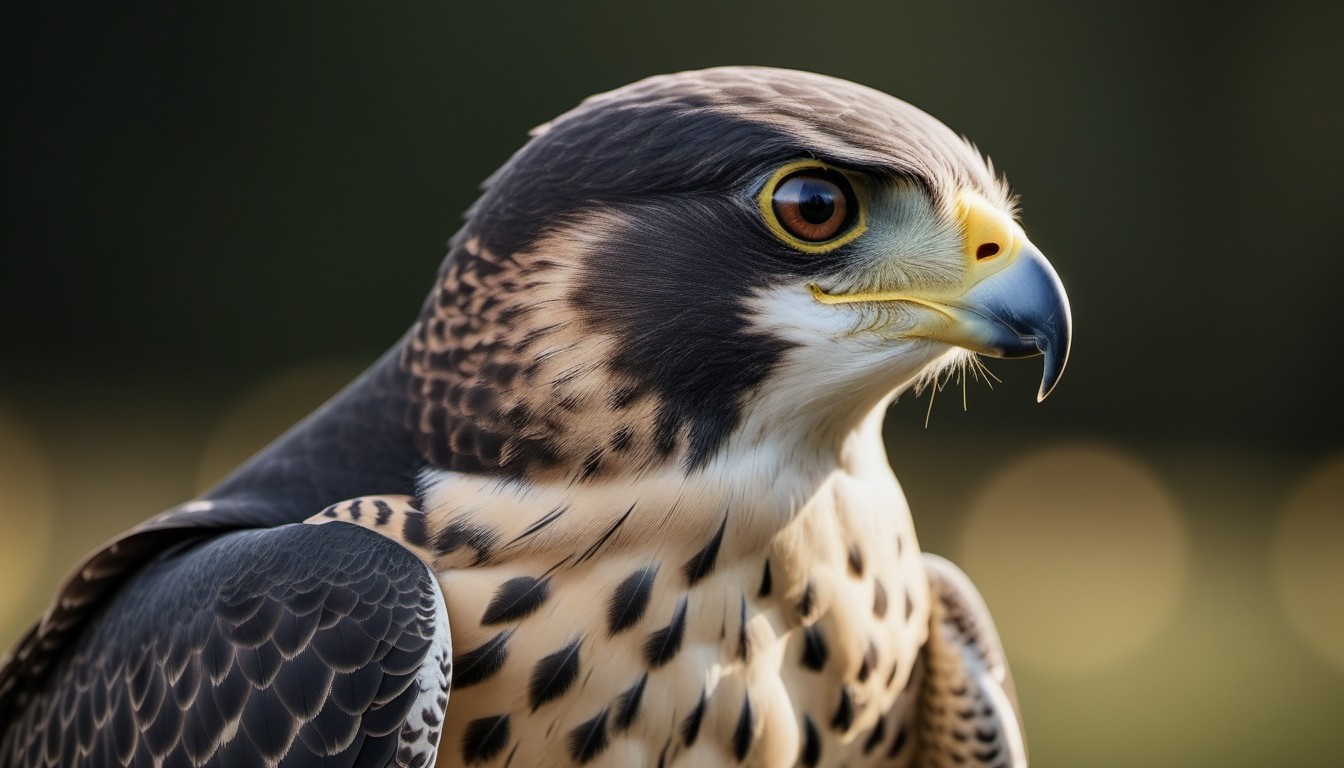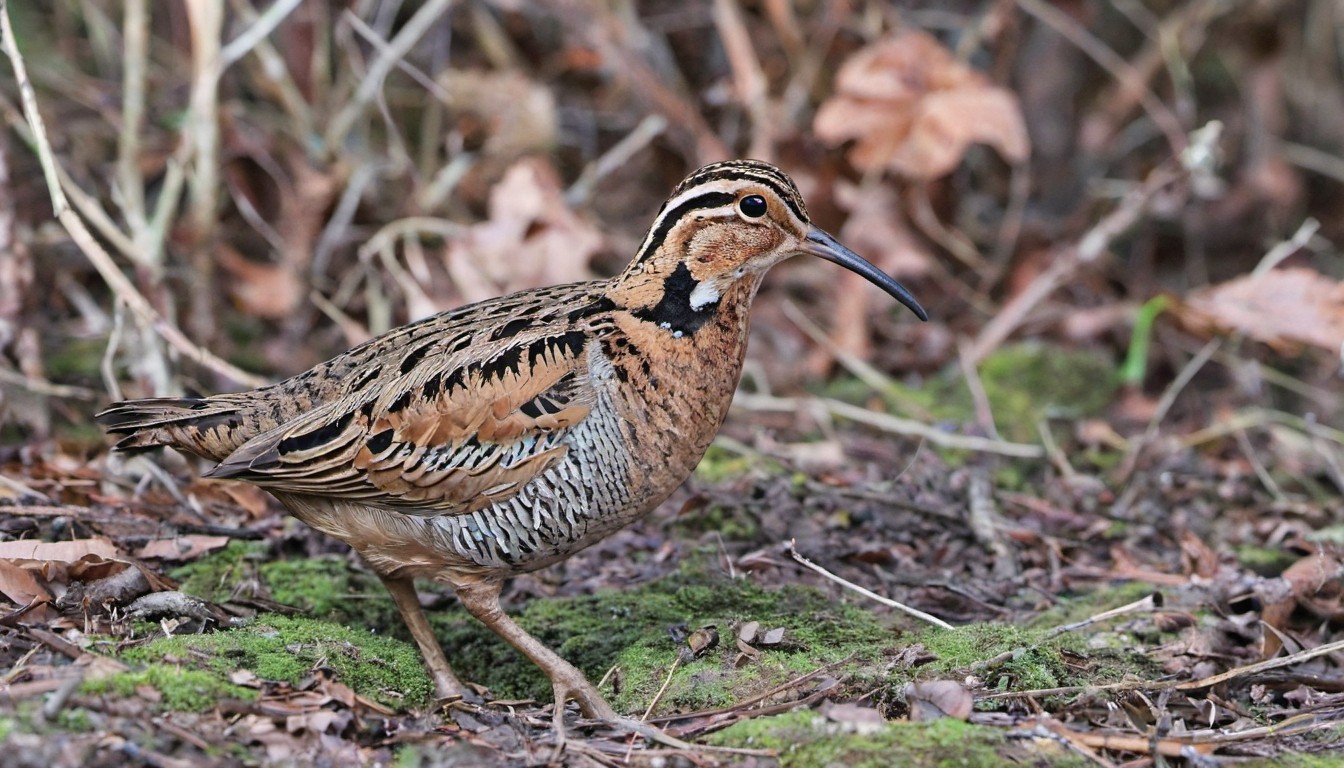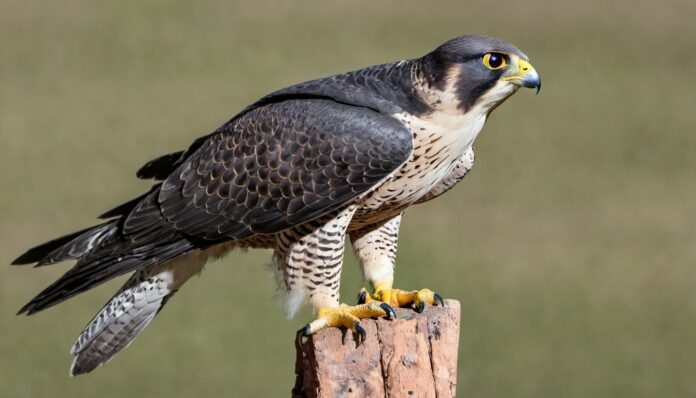The speed of a bird directly affects its hunting tactics and survival. If you hesitate for even a second, your prey may escape. And worse, you might be caught and eaten yourself. In such cases, you need to become as inconspicuous as possible and blend in with the surroundings.
But if you’re fast, nothing is scary. That’s how it goes in the world of birds. Everyone is for themselves, surviving however they can.
The fastest bird in the world – the peregrine falcon
The peregrine falcon is one of the representatives of the birds of prey family. Its speed in normal flight does not exceed 100 km/h and is significantly lower compared to the swift, which is considered the fastest bird in the world in free flight. So why is the peregrine falcon considered the champion? The point is that the peregrine falcon’s speed at the moment of its dive can exceed 300 km/h, making it an absolute record, even surpassing the swift.

The king of dives doesn’t use his ability to fly fast all the time. Only during the hunting period, after a long pursuit of prey, does the peregrine falcon make a leap at maximum speed. This allows it to catch the prey by surprise and not give it a chance to escape. In addition, the peregrine falcon has a powerful strike, killing instantly.
Thanks to its unique hunting abilities, the peregrine falcon has become practically unbeatable in the wild. That’s why its population has grown and it is present on every continent. The only exceptions are Antarctica and oceanic islands. Science knows 17 subspecies of this bird.
Distinctive features of the peregrine falcon:
- Light breast with dark stripes
- Gray back and wings
- A small black stripe around the eyes and head
- Yellow legs
- Wings and tail are pointed
Females do not have bright distinguishing features and outwardly resemble males. Their body is slightly larger, averaging 46 cm.
When the peregrine falcon makes a dive, its wings are pressed together as much as possible, and its legs are pushed back. This helps to increase speed and improve the aerodynamics of the body.
The peregrine falcon is a wild animal. It cannot be fully domesticated, but its abilities can be brought under control. Falconry was invented by humans, initially used as a means of sustenance, but over the years, it has turned into a bloody sport.
During hunting, the peregrine falcon rises into the air as high as possible. This helps it survey a large territory and, when it spots prey, remain invisible to it. Then the peregrine falcon waits for the right moment and dives like a stone.
As soon as it reaches the prey, its clenched talons come into play to inflict as many wounds as possible in the first few seconds of the attack. This immobilizes the prey and kills it almost instantly. Among the main prey of peregrine falcons are ducks, waders, and many songbirds.
Sapsans typically live for an average of 17 years. They choose rocky terrain for their habitat, and often their nests look like ordinary crevices in the rocks. They casually pile twigs and down inside them.
There are cases where sapsans use already prepared nests of other birds as their homes. It’s important in this case that there is enough fresh water near the nest. Rocky terrain is usually densely populated by various bird species, allowing the sapsan to hunt with pleasure and eat well every day.
The slowest bird in the world – the Eurasian woodcock
The Eurasian woodcock (family Scolopacidae) is native to temperate and subarctic zones of Eurasia. This unremarkable-looking bird became famous for its slowness. Its maximum speed during the breeding season does not exceed 8 km/h.

The bird’s coloration helps it blend into the surroundings and avoid encounters with predators. This is the only defense the woodcock has against danger, considering its low speed of movement.
Distinctive features of the bird:
- Coloring in brown and gray tones
- Weight up to 0.5 kg
- Dense build
- Small legs with feathers
- Body length not exceeding 40 cm
- Thin, long beak (about 10 cm)
- Male individuals significantly larger than females
Woodcocks do not live in flocks; their pairs form only during the brief breeding season. Afterward, the bird becomes solitary again. A flock of woodcocks may only form for seasonal migrations to warmer regions and back. However, many individuals of the species undertake long migrations alone.
Among other distinctive behavioral traits of woodcocks:
- Silence. The bird can only be heard during the breeding season. At other times, the woodcock prefers to remain silent and not attract attention.
- Peak activity. Woodcocks are most active at night. During the day, they rest and hide from predators.
- Food choice. The bird’s diet directly depends on its slow speed. To avoid expending too much energy on foraging, the woodcock focuses on insects that do not exceed its own speed, as well as berries, seeds, and grasses.
To react in time and defend themselves from predators, woodcocks have not only a camouflage coloration invisible to outsiders but also 360-degree vision. Despite the fact that many individuals migrate south for the winter, philopatry helps them return to their original habitat. Philopatry is a special ability to navigate in space, allowing the animal to always return to the place of its birth.
Hunting woodcocks has been a favorite pastime of humans for centuries. Before the hunt begins, a decoy imitating the bird’s call was used. Males mistake these sounds for a female’s call and fly out of their hiding spots. However, nowadays in many woodcock habitats, hunting them is either prohibited or restricted.
The woodcock is considered a wild bird and does not adapt well to captivity. Its lifespan does not exceed 10 years. Also, woodcock mortality is particularly high in the first days of life for obvious reasons. However, those individuals that manage to survive for 3 weeks and learn to fly usually live long lives.
